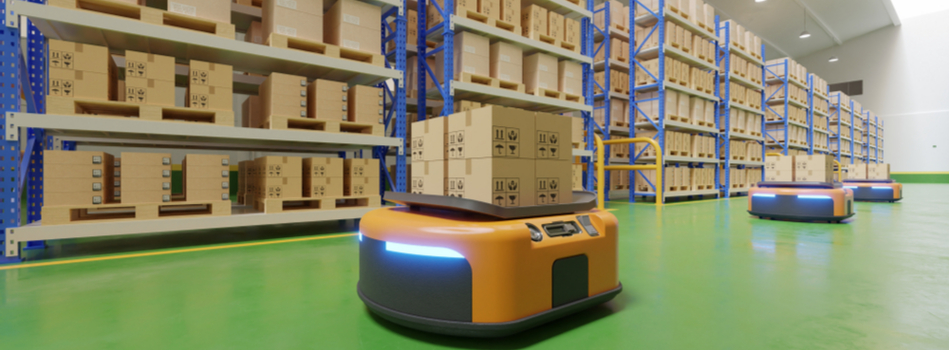A slew of new digital technologies is disrupting supply chain operations, but none is having more of an impact on the industry than artificial intelligence (AI).
Already, half of all enterprises are using AI and/or robotics to tackle problems in the supply chain and to improve its performance.

Let’s take a brief look at three areas in which AI has made the deepest inroads.
Transportation Management Solutions (TMS)

By integrating AI technology, new platforms are enabling companies to streamline their transportation systems and cut the costs of freight. TMS applications, even without AI, have been helping companies improve performance in the following ways:
- By optimising truckload routes and less-than-truckload shipments

- By identifying potential multi-stop routes
- By analysing data to determine areas affected by late deliveries.
Adding artificial intelligence into TMS systems allows operators to mine a trove of additional data, such as weather conditions and traffic congestion, to improve performance even further.
Warehouse Management Systems
In the same way that it is enhancing TMS systems, AI is also injecting new proficiency into the Warehouse Management System (WMS).
This is particularly evident in e-commerce fulfillment centres, where urgent customer orders need to be fed into the high-velocity picking workflow.

Warehouse management is increasingly making use of machine learning technology, which can extract an avalanche of data to calculate the time needed to perform warehouse tasks and balance pick density targets.
Procurement Communications
Developments in AI technology have made it possible for machines to communicate in similar ways to humans, allowing companies to speed up and enhance interaction with their suppliers.

Leading the field are chatbots, which allow text-based interactions, for example, between procurement managers and their suppliers’ systems. AI-based applications can extract data from multiple sources and provide answers in seconds. They can also answer text-based questions and pull up documents and files instantly.
Other Uses for AI in the Supply Chain

Because of its flexibility, companies are using AI to tackle all sorts of supply chain challenges. The best-known examples are the deployment of robots and automated guided vehicles (AGVs) in the warehouse. But there are other utilisations, such as:
- Planning truck-loading to maximise space
- Making pick-to-light warehouse systems more efficient
- Decreasing order cycles through fulfillment-source optimisation
- Developing the spatial-awareness capacities of warehouse robots, using machine learning and computer vision
It is clear that AI has become a game-changer in enterprise generally but especially in supply chain. With today’s fierce competition for supply chain superiority, the logistics industry could well become the testing ground for even more sophisticated AI-powered technologies.

